The Jury: Murder Trial (Ch4)
The abiding rule of British justice has always been that the accused is innocent till proven guilty. But no longer. Now, the presumption of innocence lasts just as long as it takes us to leap to a conclusion.
Few people now have the patience to hear all the facts or weigh up the evidence. That takes time and self-restraint, not to mention a dose of humility.
None of those qualities is on display in The Jury: Murder Trial, which takes 12 ‘ordinary people’ and invites them to sit in judgment on a woman accused of killing her boyfriend with a kitchen knife.
(That phrase ‘ordinary people’, on television, doesn’t refer to their class, their education, or their wealth. It simply means they are not ‘celebrities’. The paradox, though, is that now they’ve been on TV, they are temporary celebrities and could easily become stars. Look at Alison Hammond, who went on Big Brother and is now Queen Celeb. Anyway, as Ronnie Corbett used to say . . . I digress.)
These 12 jurors can’t wait to form their opinions. At least one of them, 69-year-old retired chef David, appeared to make up his mind before the show even started. ‘I just think justice has gone so soft now,’ he said. ‘There’s got to be a deterrent.’
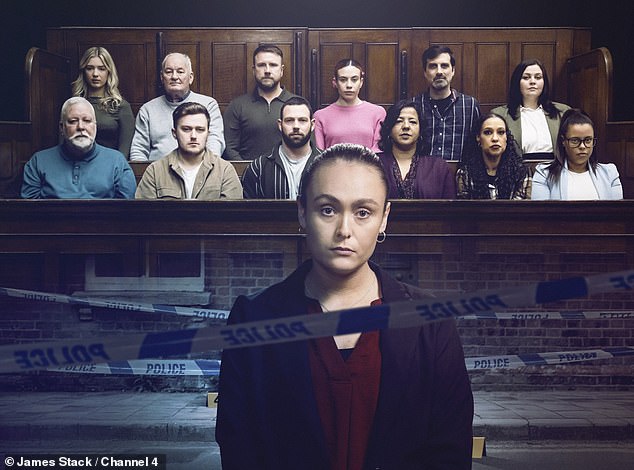
The cast of The Jury: Murder Trial (Pictured top row, left to right: Kate, David, Dan H, Aimee, Zoran, Rebecca, bottom row left to right: Tommy, James, Dan A, Joanne, Stacey and Marissa, in the front defendant – Sophie)
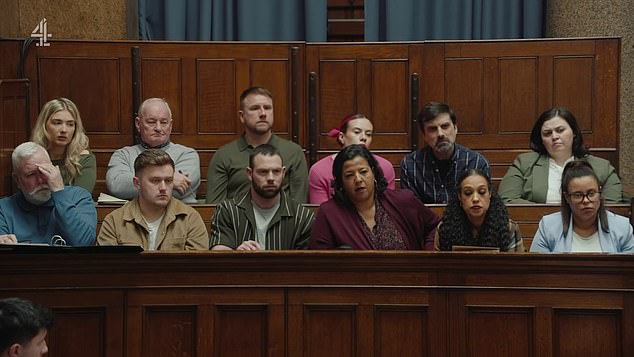
The show takes 12 ‘ordinary people’ and invites them to sit in judgment on a woman accused of killing her boyfriend with a kitchen knife
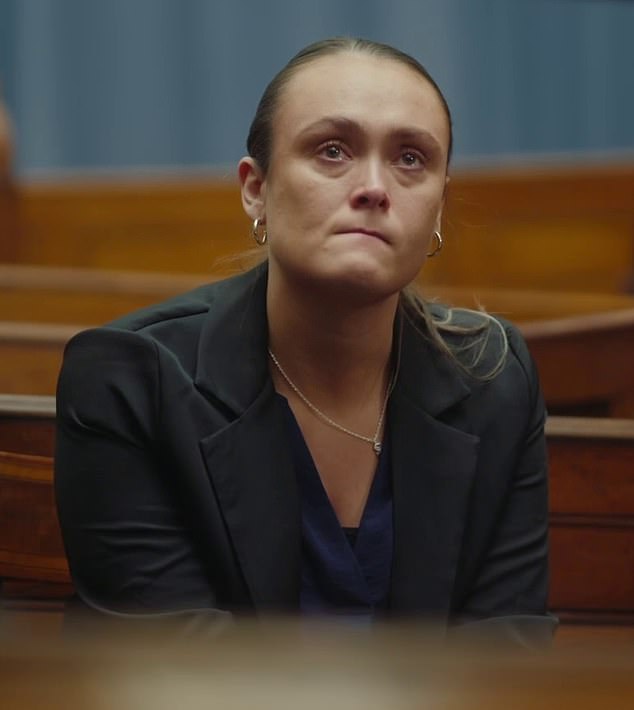
The accused (pictured, Sophie) must have been abused and was, in fact, the real victim, one juror decided as the trial got underway
Another, 26-year-old support worker Aimee, took the opposite tack. The accused must have been abused and was, in fact, the real victim, she decided as the trial got under way.
‘It’s easy to say, “No, she stabbed him, she murdered him.” Black is black, white is white. What’s happened for her to get them bruises?’ she demanded.
‘What do people want her to do, just lie there and take it? Is that the message we’re sending to women?’
Aimee has a point. It isn’t enough, these days, for people to simply do their jobs and go home for their tea. Everyone is obliged to Send A Message.
Life has become an endless referendum, where all decisions have to be public performances. It isn’t sufficient for the jury to decide whether a defendant is guilty — they must do it in a way that Sends A Message to society.
And they have ample opportunity because, after each witness leaves the stand, the 12 ordinary people dash back to the comfort of their debating room, with its sofas and its buffet of biscuits.
Before the kettle has even boiled, they’re bounding to fresh conclusions.
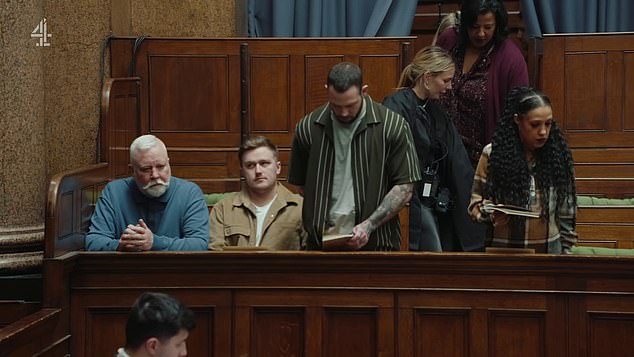
Tommy and James sit in the front bench as Dan A clutches his notepad and stares downwards
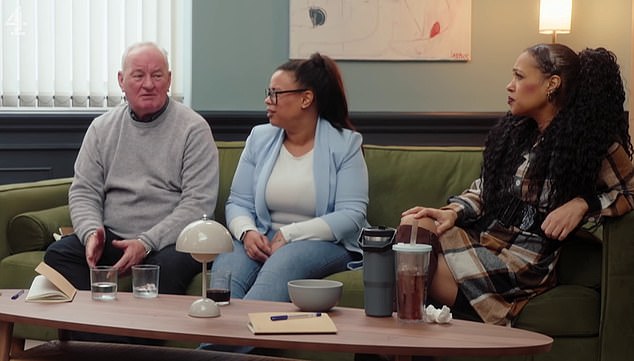
David, Marissa, and Stacey discuss in the deliberating room during the Channel 4 show
Fortunately, in this case, the hearing is a mock-up. Though the four-part series, which continues till Friday, is based on a real prosecution, the names and crucial details have been changed, to prevent viewers from identifying the original trial.
The proceedings have also been truncated, with speeches and cross-examinations cut short. We can hardly expect the jury to sit through all the boring bits, after all.
They’ve got to get on with the serious business of Sending A Message.












